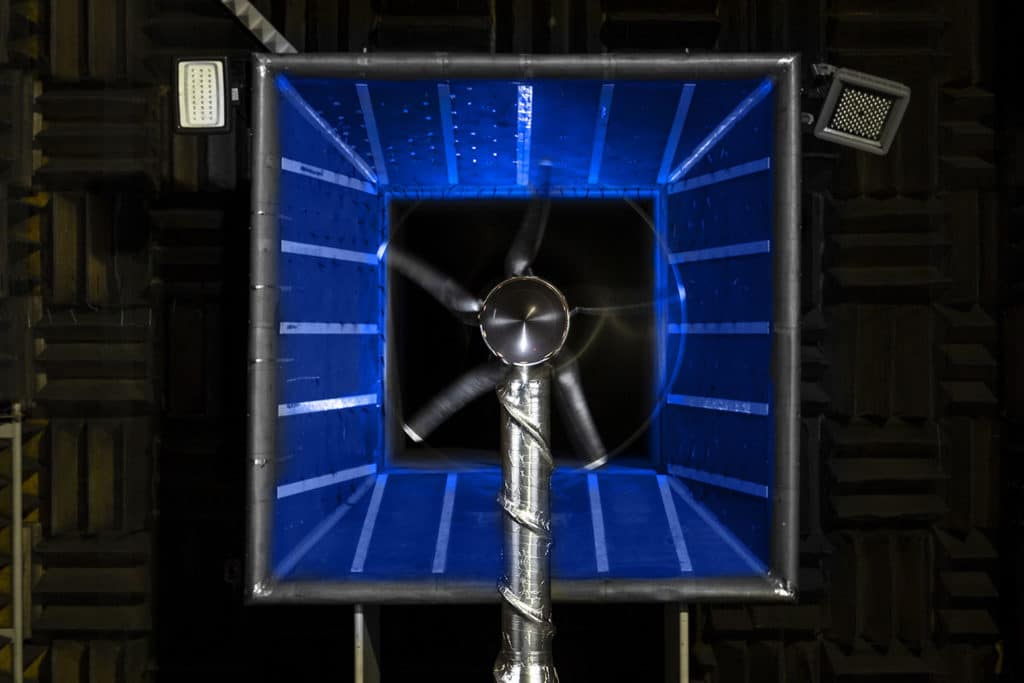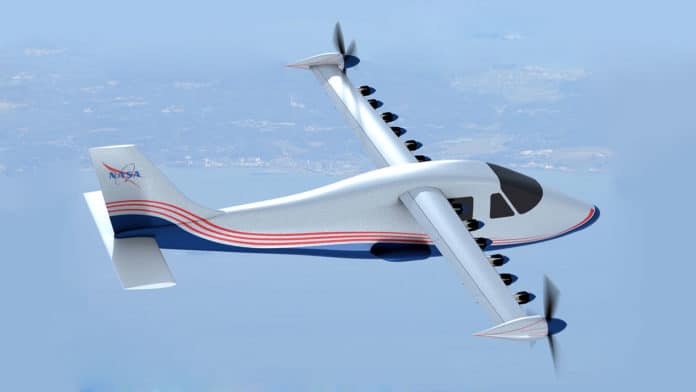NASA has been working on the all-electric X-57 Maxwell for several years. Recently, an advanced designs that will propel NASA’s first all-electric X-plane, the X-57 Maxwell, to flight underwent wind tunnel testing at the Langley Low-Speed Aeroacoustic Wind Tunnel.
These wind tunnel tests took part over two weeks, exposing the hardware to wind speeds from zero to over 90 knots, with 14 hours of powered propeller operation. During the tests, it collects valuable operational and performance data for flight conditions, using two of the full-scale propeller assemblies, provided by Empirical Systems Aerospace, or ESAero.

Ultimately, NASA plans to get an electric plane with 14 electric motors, 12 of which will be located at the leading edge of X-57’s cruise-efficient wing, and two larger and more powerful ones at its ends. These 12 high-lift motors and propellers will be involved during takeoff, providing lift augmentation to the X-Plane at low aircraft speeds.
As soon as the X-57 goes into cruising mode, the motors will shut down, and the propeller blades will fold inward to prevent creating additional drag while two larger electric cruise motors remain active on the wingtips. At landing, the smaller high-lift motors will reactivate, unfolding the propeller blades to create the appropriate lift for landing at approach speed.
NASA plans to share the data obtained during the tests with regulators. It will share the electric-propulsion design, lessons learned, and airworthiness process with regulators as new electric aircraft markets begin to emerge. The project objectives also include a 500 % increase in high-speed cruise efficiency, zero in-flight carbon emissions, and flight that is quieter for communities on the ground.
